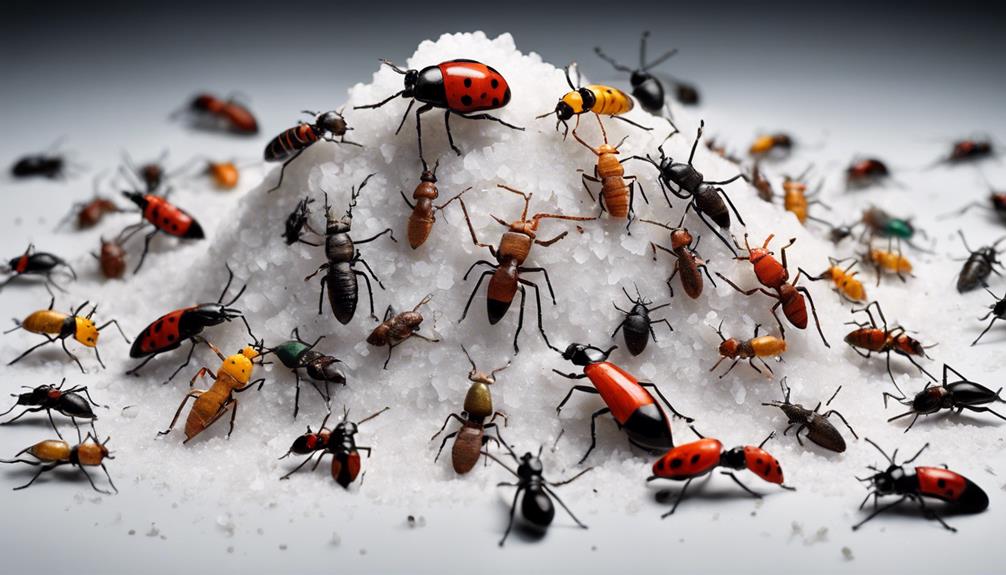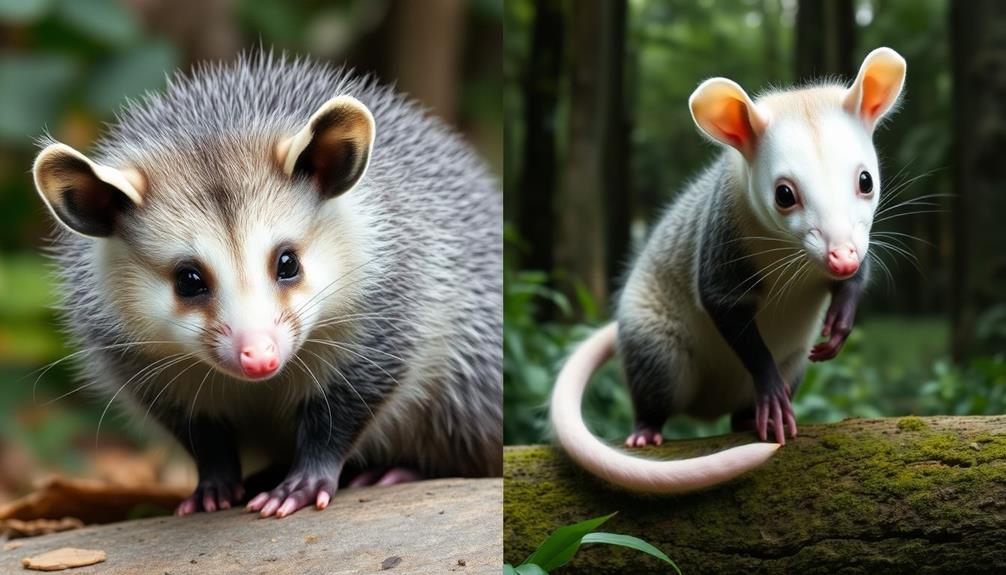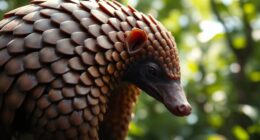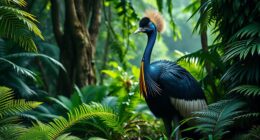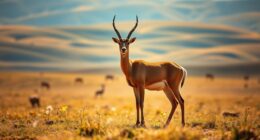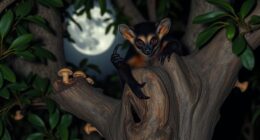Did you know that Virginia is home to an impressive 487 species of birds? Yes, that’s correct! With such a diverse range of avian inhabitants, the state is ranked among the top 15 in terms of bird species diversity.
From the coastal marshes to the woodlands, montane forests, fields, and farmlands, Virginia’s diverse habitats provide a haven for an incredible range of bird species. Whether you’re a seasoned birdwatcher or just starting out, Virginia offers an abundance of opportunities to observe and appreciate these fascinating creatures.
Key Takeaways:
- Virginia is home to 487 species of birds, making it one of the top 15 states in terms of bird species diversity.
- The state’s varied habitats, including coastal marshes, woodlands, montane forests, fields, and farmlands, provide ample opportunities for birdwatching.
- Virginia offers a rich abundance of avian residents, making it a haven for bird enthusiasts.
Most Common Birds of Virginia
When it comes to birdwatching in Virginia, there are several species that you’re likely to encounter frequently. According to the Breeding Bird Surveys in 2021, these are the 20 most commonly counted bird species in the state:
| Common Birds of Virginia | Scientific Name |
|---|---|
| American Crow | Corvus brachyrhynchos |
| Red-eyed Vireo | Vireo olivaceus |
| European Starling | Sturnus vulgaris |
| Northern Cardinal | Cardinalis cardinalis |
| Carolina Wren | Thryothorus ludovicianus |
| Mourning Dove | Zenaida macroura |
| American Robin | Turdus migratorius |
| Blue Jay | Cyanocitta cristata |
| Chipping Sparrow | Spizella passerina |
| House Finch | Haemorhous mexicanus |
| Common Grackle | Quiscalus quiscula |
| Eastern Bluebird | Sialia sialis |
| Red-winged Blackbird | Agelaius phoeniceus |
| Song Sparrow | Melospiza melodia |
| Yellow Warbler | Dendroica petechia |
| Barn Swallow | Hirundo rustica |
| Tree Swallow | Tachycineta bicolor |
| White-throated Sparrow | Zonotrichia albicollis |
| House Sparrow | Passer domesticus |
| Eastern Phoebe | Sayornis phoebe |
These common bird species can be found throughout Virginia and are often seen near backyard feeders or in gardens. Keep an eye out for them during your birdwatching adventures!
Hawks in Virginia
Virginia is a prime location for observing hawks, with several species making their homes in the state. These majestic birds of prey can be seen soaring through the sky or perched in trees, often near open areas or wooded habitats.
Some common hawks in Virginia include:
- Sharp-shinned Hawk
- Red-shouldered Hawk
- Cooper’s Hawk
These magnificent creatures are known for their keen eyesight, powerful wingspan, and impressive hunting abilities. They play a crucial role in maintaining the ecological balance by controlling populations of smaller animals.
“Hawks are exceptional hunters, with their sharp talons and hooked beaks enabling them to capture and devour their prey with ease,” says John Mitchell, a local birdwatcher. “It’s awe-inspiring to see these birds in action, whether they’re scanning the landscape from a high perch or executing a swift dive to catch their next meal.”
If you’re lucky, you might witness an incredible aerial display as hawks engage in breathtaking courtship flights or fierce territorial battles. Their acrobatic maneuvers and haunting calls are sure to leave a lasting impression.
To enhance your understanding of the hawks in Virginia, take a look at the table below:
| Hawk Species | Physical Appearance | Preferred Habitat | Feeding Habits |
|---|---|---|---|
| Sharp-shinned Hawk | Small and compact with short wings, long tail, and sharp talons | Woodlands and forest edges | Preys on small birds and mammals |
| Red-shouldered Hawk | Medium-sized with broad wings, reddish-brown shoulders, and barred underparts | Wetlands, swamps, and forests | Feeds on small mammals, amphibians, and reptiles |
| Cooper’s Hawk | Medium to large size with rounded wings, long tail, and dark gray plumage on top | Woodlands, suburban areas, and gardens | Preys on birds, especially those visiting feeders |
These incredible birds exemplify the beauty and power of nature. Their presence in Virginia’s skies enriches the state’s biodiversity and provides a thrilling experience for birdwatchers and nature enthusiasts alike.
Owls in Virginia
Virginia is home to a variety of owl species, making it a fascinating destination for bird enthusiasts. These nocturnal birds of prey are known for their incredible adaptations and mysterious habits. While owls are more active during the night, their distinct calls and occasional daytime appearances make them a treat to observe.
Some common owls you can find in Virginia include:
| Owl Species | Description |
|---|---|
| Eastern Screech-Owl | The Eastern Screech-Owl is a small owl with distinctive ear tufts. It can be found in wooded areas and has excellent camouflage, blending in with tree bark. |
| Great Horned Owl | The Great Horned Owl is one of the largest owl species in Virginia. With its powerful talons and piercing eyes, it is a formidable predator. It inhabits a variety of habitats, from forests to suburban areas. |
| Barred Owl | The Barred Owl is known for its deep hooting call, often described as “Who cooks for you? Who cooks for you all?” It prefers swampy woodlands and can be found near water sources. |
These owls play an important role in Virginia’s ecosystem by controlling rodent populations and maintaining a healthy balance in the food chain. Despite their nocturnal nature, hearing their calls echo through the night creates a magical experience for birdwatchers.
Interesting Facts about Owls:
- Owls have specialized feathers that allow them to fly silently, helping them sneak up on their prey.
- They have incredibly sharp talons and powerful beaks for capturing and tearing apart their food.
- Owls are capable of rotating their heads up to 270 degrees, allowing them to see in almost every direction without moving their bodies.
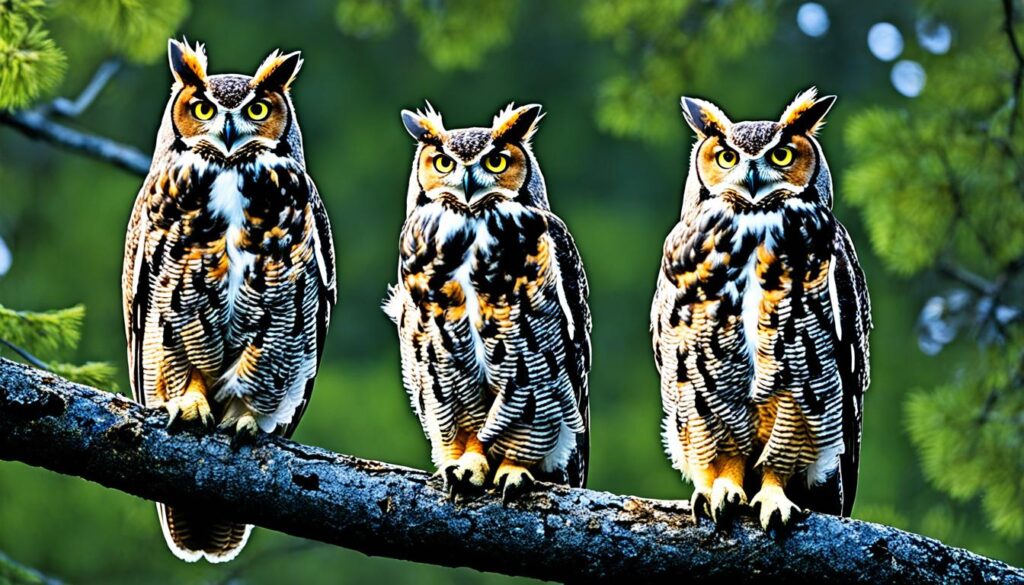
“The owl is the wisest of all birds because the more it sees, the less it talks.”
Exploring Virginia’s owl population can be a truly enchanting experience. Whether listening to their calls under the moonlit sky or catching a glimpse of their majestic flight, these nocturnal creatures never fail to captivate birdwatchers.
Woodpeckers in Virginia
Virginia is a haven for woodpeckers, with several species making their homes in the state’s forests and woodlands. These fascinating birds play a crucial role in maintaining the health of the ecosystem by foraging for insects, excavating nesting cavities, and drumming on trees to establish territories.
Some common woodpeckers in Virginia include:
- Downy Woodpecker
- Red-bellied Woodpecker
- Northern Flicker
The Downy Woodpecker, often mistaken for its larger relative, the Hairy Woodpecker, can be identified by its smaller size and black-and-white plumage. It is commonly found in woodlands, parks, and suburban areas across Virginia.
The Red-bellied Woodpecker, despite its name, has a red crown and only a pale hint of red on its belly. This species is known for its distinctive call and can be found in both forested and residential areas throughout the state.
The Northern Flicker, Virginia’s largest woodpecker species, exhibits a unique mix of brown, gray, and black feathers with striking yellow underwings. It is often observed foraging on the ground for ants and beetles.
Woodpeckers are skilled climbers, using their powerful beaks and stiff tails to brace themselves against trees. Their specialized tongues, which are barbed and can be extended far beyond their beaks, help extract insects from deep crevices.
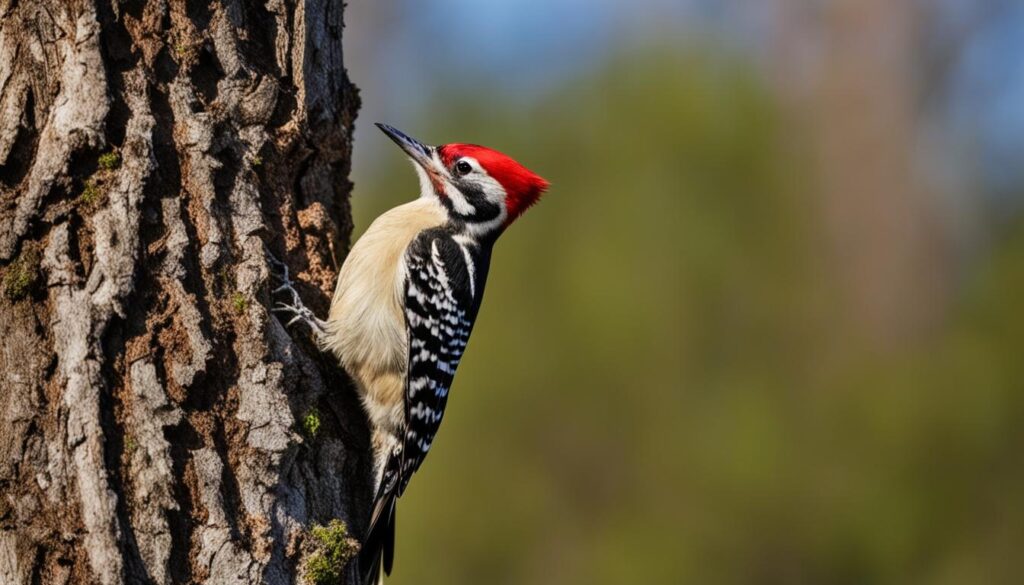
A Closer Look: Woodpecker Drumming
Woodpecker drumming, a rapid series of strikes against objects like trees or utility poles, is one of the distinctive behaviors exhibited by woodpeckers. This behavior serves various purposes, including establishing territories, attracting mates, and communicating with other woodpeckers. Woodpeckers have specially adapted skulls and neck muscles to withstand the repeated impacts from drumming.
The following table provides a summary of the key characteristics of the common woodpecker species in Virginia:
| Woodpecker Species | Description | Preferred Habitat | Feeding Behavior |
|---|---|---|---|
| Downy Woodpecker | Smallest woodpecker in Virginia, black-and-white plumage | Woodlands, parks, suburban areas | Probes bark for insects and larvae |
| Red-bellied Woodpecker | Red crown, pale hint of red on belly, distinctive call | Forests, residential areas | Forages on tree trunks for insects and fruits |
| Northern Flicker | Largest woodpecker species in Virginia, brown plumage with black bars | Forests, open woodlands, suburban areas | Forages on the ground for ants, beetles, and fruits |
Woodpeckers are a delight to observe and photograph, thanks to their vibrant colors, distinctive calls, and acrobatic movements. Whether you’re exploring Virginia’s forests, parks, or even your own backyard, keep an eye out for these fascinating birds and their characteristic drumming rhythms.
Eagles in Virginia
Virginia is fortunate to have the Bald Eagle as a common bird species. These majestic birds can be seen near rivers, lakes, and along the coast, where they nest and hunt for fish. The population of Bald Eagles in Virginia has made a remarkable recovery in recent years, thanks to conservation efforts and the banning of DDT.

The Bald Eagle is a symbol of strength and beauty and holds a special place in American history and culture. These formidable birds of prey are known for their impressive wingspan, reaching up to 7 feet, and striking appearance with their white heads and dark brown bodies.
Once threatened by habitat loss, pollution, and hunting, eagles in Virginia have made a remarkable comeback. Their recovery is a testament to the success of conservation efforts and environmental regulations. Today, Bald Eagles can be spotted in various areas of Virginia, including the Chesapeake Bay, the James River, and Shenandoah National Park.
These mighty hunters have keen eyesight and remarkable hunting skills. They primarily feed on fish, swooping down from the sky to snatch their prey from the water’s surface. Bald Eagles also scavenge for carrion and can occasionally be seen feeding on roadkill.
Eagle Conservation Efforts in Virginia
The recovery of Bald Eagles in Virginia is largely attributed to the efforts of conservation organizations and government agencies. The Virginia Department of Wildlife Resources, in collaboration with the U.S. Fish and Wildlife Service, has implemented measures to protect eagle habitats, regulate hunting, and raise public awareness about these magnificent birds.
“The recovery of Bald Eagles in Virginia is a conservation success story. Through habitat conservation, environmental education, and the ban on harmful pesticides, we have been able to ensure the survival of this iconic bird species.” – Virginia Department of Wildlife Resources
In addition to protecting their natural habitats, designated eagle management areas have been established to provide nesting and foraging sites for Bald Eagles. These areas are closely monitored to ensure the continued well-being and conservation of these birds.
| Eagle Conservation Efforts in Virginia: |
|---|
| Habitat protection and restoration |
| Regulation of hunting and disturbance in nesting areas |
| Monitoring and management of eagle populations |
| Public education and awareness programs |
Thanks to these conservation efforts, eagles in Virginia continue to thrive, delighting birdwatchers and nature enthusiasts with their majestic presence. Observing a Bald Eagle soaring through the sky or witnessing its fishing prowess is a humbling experience that reminds us of the beauty and resilience of nature.
Hummingbirds in Virginia
Hummingbirds bring a splash of color and excitement to Virginia’s gardens and natural areas. The most common hummingbird species in Virginia is the Ruby-throated Hummingbird, known for its vibrant red throat. These tiny birds are attracted to nectar-producing flowers and feeders and can be observed hovering and darting between blooms.

“Hummingbirds are fascinating creatures with their ability to hover in mid-air and fly backwards. Observing their delicate movements and iridescent feathers is a true delight for birdwatchers in Virginia.” – Bird Enthusiast Magazine
The Ruby-throated Hummingbird is a migratory species that arrives in Virginia during the spring and summer months. Its vibrant colors and agility make it a favorite among bird enthusiasts. These small birds have a wingspan of around 3-4 inches and weigh only a few grams.
Hummingbirds are uniquely adapted for feeding on nectar. Their long, slender beaks and extendable tongues allow them to reach deep into flowers to extract nectar. They also consume insects and spiders for additional protein.
To attract hummingbirds to your garden, plant nectar-producing flowers such as bee balm, cardinal flower, and trumpet vine. Hanging feeders filled with a sugar water solution (1 part sugar to 4 parts water) can also entice these tiny birds to visit.
Interesting Facts about Hummingbirds:
- Hummingbirds have the highest metabolism of any bird, with a heart rate of up to 1,260 beats per minute.
- They can fly at speeds of up to 60 miles per hour, making them one of the fastest birds in the world.
- Hummingbirds can flap their wings up to 80 times per second, creating the humming sound they are named after.
- Despite their small size, hummingbirds are known for their aggression and territorial behavior, fiercely defending feeding territories.
Tips for Watching Hummingbirds in Virginia:
- Set up a hummingbird feeder in your backyard and keep it clean and filled with fresh nectar.
- Plant a variety of nectar-rich flowers that bloom throughout the spring and summer.
- Be patient and observant, as hummingbirds can be quick and elusive.
- Avoid using pesticides in your garden, as they can be harmful to hummingbirds and other wildlife.
By creating a welcoming habitat for hummingbirds, you can enjoy their vibrant presence and contribute to the conservation of these remarkable birds in Virginia.
Waterbirds in Virginia
Virginia’s coastal and offshore areas serve as crucial habitats for a diverse range of waterbirds. These bird species can be found along the coast, in marshes, and near bodies of water throughout the state. With their graceful flight and stunning plumage, waterbirds in Virginia are a true delight for birdwatchers and nature enthusiasts.
Among the waterbirds that can be observed in Virginia, some common species include pelicans, swans, ducks, egrets, herons, skimmers, terns, and ibises. Their presence adds to the rich tapestry of bird life in the region, attracting visitors from near and far.
Whether you’re exploring the coastline, venturing into marshlands, or observing bird activity near lakes and rivers, you’re likely to encounter these beautiful waterbirds. Keep your eyes peeled for their distinct colors and patterns as they navigate their aquatic habitats.
Notable Waterbirds in Virginia
| Species | Description |
|---|---|
| Pelicans | Large, long-winged birds known for their impressive aerial acrobatics and distinctive pouch-like beaks. |
| Swans | Elegant, white-feathered birds, often associated with grace and beauty. |
| Ducks | Vibrantly colored species that can be found dabbling or diving for food in both fresh and saltwater environments. |
| Egrets and Herons | Tall, slender birds with long necks and beaks, often seen wading in shallow water as they patiently hunt for fish. |
| Skimmers | Uniquely designed with elongated lower bills that they use to skim the water’s surface in search of prey. |
| Terns | Small to medium-sized birds known for their graceful flight and acrobatic dives as they catch fish in mid-air. |
| Ibises | Distinctive long-billed birds with curved bills, often seen probing the mud for food in marshy areas. |

Observing these waterbirds in their natural habitats provides an opportunity to appreciate their beauty and learn more about their behaviors and ecological importance. Whether you’re a seasoned birder or a novice enthusiast, a visit to Virginia’s coastal areas will undoubtedly leave you with memorable encounters with these captivating creatures.
Grassland Birds in Virginia
Grassland bird populations have been experiencing significant declines not only in Virginia but also across the United States and Canada. The loss of suitable grassland habitats and changes in agricultural practices have contributed to these declines. However, proactive conservation efforts are underway to protect and restore grassland habitats, helping to support the recovery of these birds.
Among the grassland birds found in Virginia, the Grasshopper Sparrow and Eastern Meadowlark are particularly noteworthy. These birds are often spotted in open fields and meadows, where they depend on the grasses and wildflowers for nesting and foraging.
The Grasshopper Sparrow (Ammodramus savannarum) is a small, secretive bird with a distinctive buzzing-like song that can be heard during the breeding season. It primarily feeds on insects and is well-adapted to the grassland habitat.
The Eastern Meadowlark (Sturnella magna) is a medium-sized, ground-dwelling bird known for its rich, melodic song. It is famous for its bright yellow breast with a black “V” pattern and can be seen perched on fence posts or in open areas, searching for insects and seeds.
Habitat Conservation Efforts
Recognizing the importance of grassland habitats for the survival of these birds, organizations and agencies in Virginia are actively working to protect and restore these valuable ecosystems. Through the implementation of sustainable land management practices, conservationists are creating and maintaining suitable grassland habitats for these imperiled bird species.
Conservation strategies implemented in Virginia include:
- Restoring native grasses and wildflowers in degraded grasslands
- Creating buffer zones around existing grassland habitats to reduce disturbance
- Collaborating with landowners and farmers to promote bird-friendly agricultural practices
- Monitoring bird populations to assess the effectiveness of conservation efforts
These initiatives aim to reverse the decline of grassland bird populations in Virginia and ensure their long-term survival.
Grassland Bird Population Decline in Virginia: A Table
| Bird Species | Status | Population Trend |
|---|---|---|
| Grasshopper Sparrow | Threatened | Declining |
| Eastern Meadowlark | Near Threatened | Declining |
Table: Grassland bird species and their population trends in Virginia.
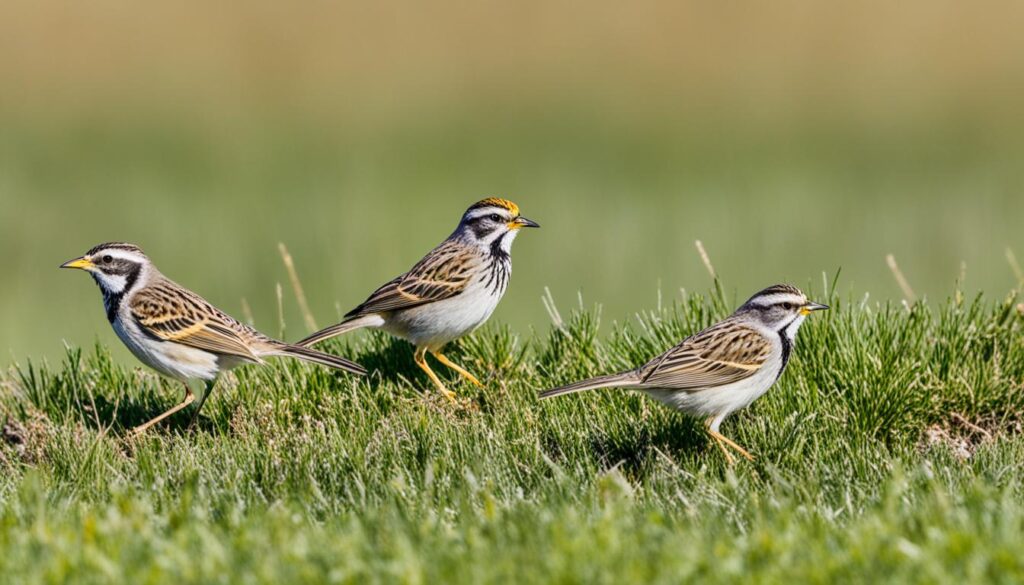
Raptors in Virginia
Virginia is known for its rich diversity of bird species, and raptors are no exception. From majestic eagles to swift falcons, the skies of Virginia are home to a remarkable variety of raptors. These birds of prey play a vital role in maintaining the balance of ecosystems and are a fascinating sight for birdwatchers and nature enthusiasts.
One of the most iconic raptors in Virginia is the Bald Eagle. Known for its striking white head and impressive wingspan, the Bald Eagle can be found near rivers, lakes, and along the coast, where it hunts for fish. Thanks to conservation efforts and a ban on the pesticide DDT, the population of Bald Eagles in Virginia has rebounded, offering birdwatchers a chance to witness these national symbols in their natural habitat.
Another common raptor in Virginia is the Red-tailed Hawk. These large birds are easily recognizable by their broad wings and reddish-brown tails. They can be found soaring over open fields and woodlands, hunting for small mammals and birds. Other hawks that can be spotted in Virginia include the Cooper’s Hawk and the Red-shouldered Hawk.
Falcons are known for their incredible speed and aerial agility. In Virginia, the Peregrine Falcon and the American Kestrel are two species that are often observed. The Peregrine Falcon is known for its dramatic hunting dives, reaching speeds of up to 240 miles per hour. The American Kestrel, on the other hand, is smaller in size and can often be seen perched on utility wires and fence posts, scanning the surroundings for prey.
Owls, with their nocturnal habits and haunting calls, add an air of mystery to Virginia’s raptors. The Barred Owl, Great Horned Owl, and Eastern Screech-Owl are a few of the owl species found in the state. These elusive creatures can be heard at night, and lucky observers may catch a glimpse of them in wooded areas.

Forest Birds in Virginia
Virginia’s forests are teeming with a diverse range of bird species, making them an enticing destination for birdwatchers and nature enthusiasts. These lush woodlands provide unique habitats for various forest-dwelling birds, offering a glimpse into the fascinating world of avian life in Virginia.
Different types of forests in Virginia, including bottomland hardwoods, pine forests, oak-hickory woodlands, and conifer forests, support distinct communities of bird species. Each forest type offers its own set of resources and nesting sites, attracting a myriad of feathered residents.
Common Forest Birds in Virginia
Among the many forest birds found in Virginia, three species stand out as commonly observed and cherished by birdwatchers:
- Indigo Bunting: Known for its vibrant blue color, the Indigo Bunting (Passerina cyanea) adds a splash of beauty to Virginia’s forests. These small songbirds migrate to the state in the spring and summer, serenading the woodlands with their melodious songs.
- Golden-winged Warbler: With its striking yellow plumage and distinctive black facial markings, the Golden-winged Warbler (Vermivora chrysoptera) is a prized sighting for bird enthusiasts. These migratory birds can be spotted in Virginia’s high-elevation forests during the breeding season.
- Red-eyed Vireo: The Red-eyed Vireo (Vireo olivaceus) is a small songbird known for its intricate songs heard throughout Virginia’s forests. With its olive-green plumage and distinctive red eyes, this species is a common inhabitant of deciduous forests, where it forages for insects among the tree leaves.

These forest birds, along with numerous other species, rely on Virginia’s forests for nesting, feeding, and resting. The conservation and protection of these habitats are crucial for the long-term survival of these beautiful avian residents.
“Virginia’s forests offer a haven for a multitude of bird species, showcasing the state’s commitment to preserving biodiversity and promoting bird conservation.” – Virginia Department of Wildlife Resources
Bird Conservation Efforts in Virginia
Virginia’s bird conservation efforts play a vital role in safeguarding forest bird populations and their habitats. Various organizations and initiatives are dedicated to preserving the natural environments that these avian species rely on for survival.
The American Bird Conservancy, in collaboration with the Virginia Department of Wildlife Resources and the Appalachian Mountains Joint Venture, works tirelessly to protect and restore forest habitats. These efforts include promoting sustainable forestry practices, conserving critical forest areas, and conducting research to inform conservation strategies.
By supporting these conservation initiatives and raising awareness about the significance of Virginia’s forests, we can ensure the continued presence of these captivating forest birds for generations to come.
| Forest Bird Species | Common Habitat | Conservation Status |
|---|---|---|
| Indigo Bunting | Deciduous forests, woodland edges | Least Concern |
| Golden-winged Warbler | High-elevation forests | Vulnerable |
| Red-eyed Vireo | Deciduous forests, mixed woodlands | Least Concern |
Urban Birds in Virginia
Even in urban areas, birdlife can flourish. Virginia’s cities and towns are home to a variety of bird species, including familiar ones like the American Robin and Northern Mockingbird. Urban parks, gardens, and green spaces provide important habitat and food sources for these birds, making cities a great place for birdwatching.
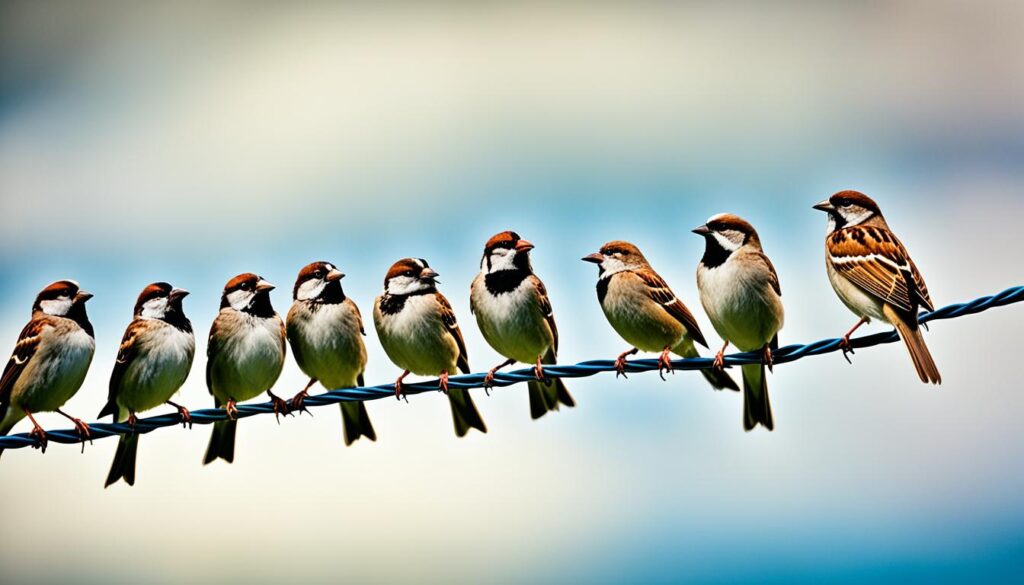
Virginia’s urban areas are teeming with avian activity. From the bustling streets of Richmond to the charming neighborhoods of Alexandria, birds can be found adapting to their urban surroundings. The American Robin, with its vibrant orange breast and cheerful song, can often be spotted hopping across lawns and foraging for worms in urban gardens.
“The bird takes flight, its wings a blur as it darts through the cityscape, a reminder that nature can thrive even in the midst of human-made environments.”
The Northern Mockingbird, known for its ability to mimic the songs of other birds, can be heard singing its varied repertoire from tree branches and rooftops. These resourceful birds have adapted well to urban environments, using man-made structures as perches and singing their melodious tunes throughout the day.
Benefits of Urban Birdwatching
Urban birdwatching offers a unique opportunity to observe and appreciate the resilience of birds in the face of urbanization. The concrete jungle of cities may seem an unlikely habitat for birds, but these adaptable creatures have found ways to thrive. By exploring urban parks, botanical gardens, and green spaces, birdwatchers can discover a whole new world of feathered wonders.
- Get up close and personal with a variety of bird species
- Witness the fascinating behaviors and adaptations of urban birds
- Experience the beauty of bird migration in the heart of the city
- Contribute to citizen science projects by reporting urban bird sightings
So grab a pair of binoculars, put on your walking shoes, and explore the urban birdlife of Virginia!
Bird Conservation in Virginia
Virginia is committed to the conservation of its diverse bird species and the protection of their habitats. Several organizations are actively involved in bird conservation efforts throughout the state, ensuring the preservation of Virginia’s unique avian population.
One such organization is the American Bird Conservancy, a nonprofit dedicated to conserving native bird species and their habitats across the United States. They work closely with local communities, landowners, and government agencies to implement effective conservation strategies.
The Virginia Department of Wildlife Resources is another key player in bird conservation in the state. They focus on habitat restoration, monitoring populations, and implementing conservation programs. Through their initiatives, they aim to safeguard Virginia’s bird species for future generations to enjoy.
The Appalachian Mountains Joint Venture (AMJV) is a partnership of federal, state, and nonprofit organizations working together to conserve bird populations in the Appalachian region, including Virginia. They focus on habitat management, research, and education to ensure the long-term survival of bird species in the area.
The efforts of these organizations are crucial in preserving the rich bird diversity found in Virginia. Through their collaborative work, bird populations are monitored, habitats are protected, and conservation initiatives are implemented.
By supporting these conservation organizations and initiatives, individuals and communities contribute to the preservation of Virginia’s bird species and their habitats. Protecting bird populations not only ensures the beauty and diversity of Virginia’s natural landscapes but also promotes the overall health of ecosystems and biodiversity in the region.
Bird Conservation Organizations in Virginia
| Organization | Focus | Website |
|---|---|---|
| American Bird Conservancy | Conserving native bird species and habitats | https://abcbirds.org/ |
| Virginia Department of Wildlife Resources | Habitat restoration and conservation programs | https://dwr.virginia.gov/ |
| Appalachian Mountains Joint Venture | Conserving bird populations in the Appalachian region | https://amjv.org/ |
Through their dedicated efforts, these organizations and others like them are making significant strides in preserving Virginia’s bird species for future generations to appreciate and cherish.

Conclusion
Virginia’s abundant bird species and diverse habitats make it a haven for birdwatchers and nature enthusiasts. With its impressive list of 487 bird species, including both common birds like the American Crow and elusive species like the Barred Owl, Virginia offers endless opportunities for birding enthusiasts to explore and discover new and exciting species.
By appreciating and protecting Virginia’s feathered residents, we can ensure their continued presence for generations to come. It is important to recognize the crucial role that these birds play in maintaining the balance of our ecosystems. Their presence not only brings beauty and joy to our landscapes but also contributes to critical ecological processes, such as pollination and pest control.
To support the conservation of Virginia’s bird populations, individuals and organizations can take steps to create bird-friendly habitats, such as planting native plants, providing clean water sources, and reducing the use of pesticides. Additionally, supporting local conservation efforts and participating in citizen science projects can contribute to our understanding of bird populations and help inform conservation strategies.
Virginia is truly a birdwatcher’s paradise, offering a remarkable variety of species and habitats to explore. By embracing a spirit of appreciation and stewardship, we can ensure that Virginia remains a haven for birds and a source of wonder and inspiration for all who appreciate the beauty of our feathered friends.

